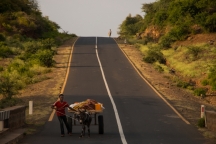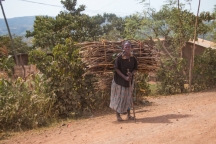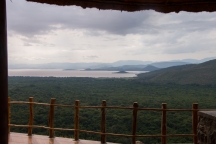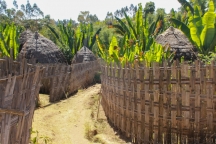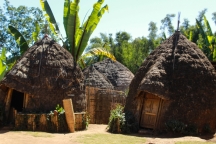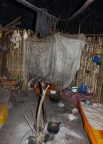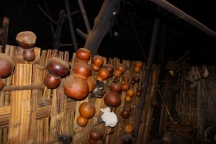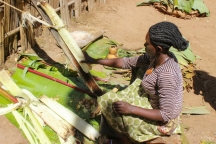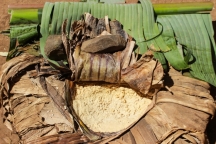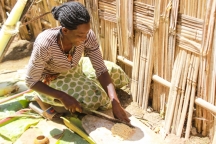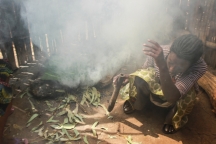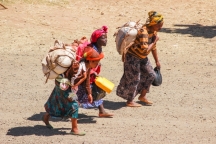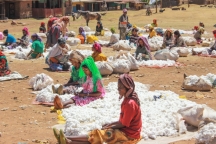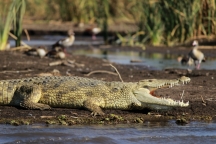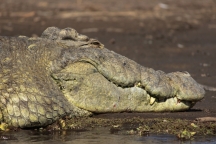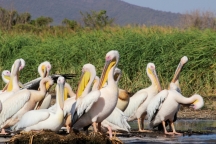Translated as “forty springs” for some hot springs in its vicinity Arba Minch is the gateway town to the Omo Valley region of Ethiopia and most visitors fly or drive here on their way to the tribes of the Omo. The town itself is nothing to write home about, it does have a couple of things going for it and is worth a day or two on the way to the Omo or on your return trip.
Ethiopian Airlines offers regular flights to Arba Minch from Addis Ababa on modern and comfortable aircraft, but you can also drive here from Addis in 7-8 hours on fairly decent roads. I have done both and prefer the drive.
One practical reason to consider driving to Arba Minch, if you are going to Omo Valley is that it’s easier to hire a car and driver in Addis, as there is better supply of quality vehicles, so more competition for the tourist dollar. There is less choice in Arba Minch and the owners/drivers have more bargaining power, so may actually refuse to take you to some of the tribal areas in Omo Valley, if they feel road conditions are hazardous to their car.
In addition to this the ride South from Addis is actually quite scenic and enjoyable – as you experience Ethiopian life outside the capital, drive along the lakes of the Ethiopian Rift Valley and buy whatever fresh seasonal fruit along the road. If you get a chance, be sure to try the fresh sugar cane and the mangoes.
You will be also amazed by how much friendly attention you will attract from the locals. We would make a pit stop for a few minutes on a deserted stretch of road and would be surrounded by kids within minutes. As you get close to Arba Minch, and especially if you head out to Konso and the Omo, the kids often dance and ask for “Highland” – this was the first bottled water brand sold in the country and the empty plastic bottles come in handy for the locals.
By far the best hotel in Arba Minch (and possibly in all of Southern Ethiopia) is the Paradise Lodge, located on a hilltop and offering fantastic views over Ethiopia’s two largest Rift Valley Lakes – Lake Abaya and Lake Chamo and the sliver of land that separates them, great restaurants, a swimming pool and wonderful service. If you stay here, be sure to get a lake view room. The remote runner-up is the Arba Minch Tourist hotel, which has fairly basic rooms, but decent WiFi and a good restaurant.
While there is not much of note in Arba Minch proper, there are at least two attractions close by that make it a worthwhile stop on your way to or from the Omo Valley. The first of these is the village of the Dorze people up in the highlands to the about an hour’s drive North of the city in the mountains.
The Dorze are known for their distinctive houses and for their weaving skills. The houses stand as high as 9 feet tall and are shaped to resemble elephant heads. The houses are built of a combination of grass and false banana leaves woven around a scaffold made of bamboo. The Dorze build tall houses in case they are attacked by termites or start to rot, and need to be moved. These houses can last a couple their entire life, although they do tend to shrink with age.
The Dorze are as hospitable as all Ethiopians and do a fantastic job introducing visitors to their culture and way of life. For a small fee you can go on a small tour, which will include a visit inside one of the traditional houses, a demonstration of spinning cotton by hand and the weaving coop, where the fine cotton fabrics, considered the best in Ethiopia are made, as well as a walk around the village and an introduction to the crops grown here and the foods made by the villagers You also have the option of spending the night in the village at the Dorze Lodge. We did not choose that option, but one thing that may be worth considering is that the Dorze live at a relatively high altitude, so the area may get chilly.
The tour ended with a demonstration of how the local bread is made from enset or false banana root, showing all steps of the cooking process, including sampling freshly cooked bread with some delicious local honey.
We were also fortunate to come here on market day, so while the weavers’ coop workshop was almost empty, we still had an enjoyable look at the traditional Dorze Market. Mondays and Thursdays are market days here and, while it’s not as fascinating as the markets in Key Afer or Turmi, it’s worth checking out a Dorze market if you are here for it.
The second place we enjoyed in Arba Minch was Nechisar National Park, although we did not spend that much time in the park itself.
Nechisar lies east of Arba Minch and the park territory covers Lakes Chamo and Abaya, as well as the grasslands East of the lakes. While it may not be as interesting for someone with a lot of safari experience, there is at least one easy trip here that is definitely worth doing – a boat trip to Lake Chamo, where you can see hundreds of crocodiles sun themselves on the shore, a spot called crocodile market. In addition to the reptiles, there are also hippos in the lake and lots of birds, including storks and pelicans. This alone make the easy trip worthwhile. In all honesty, this was all we had time to do, but from reading about the park you could also try the Nechisar Plain for game viewing. Although, other than the occasional lion, there have been no recent sightings of large predators, there are still gazelle, kudu, dik-dik and endemic Swayne’s hartebeest in the park.
There are a couple of other places of interest in Arba Minch that I didn’t get to visit – the hot springs which give the city its name, also on Nechisar Park territory, although I have read that it is often closed to the public; and the local crocodile farm. Although, to be honest, after seeing the Crocodile Market in the park, going to a farm, where the animals live in cages, has very little appeal.


